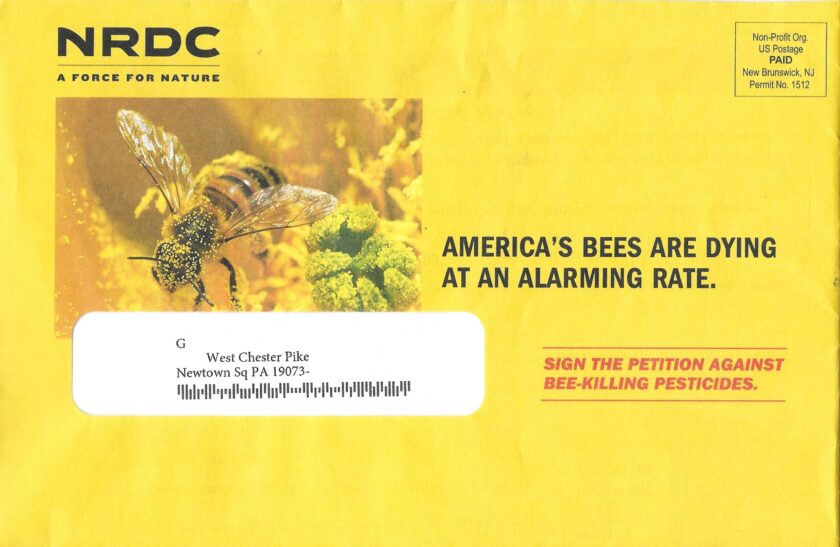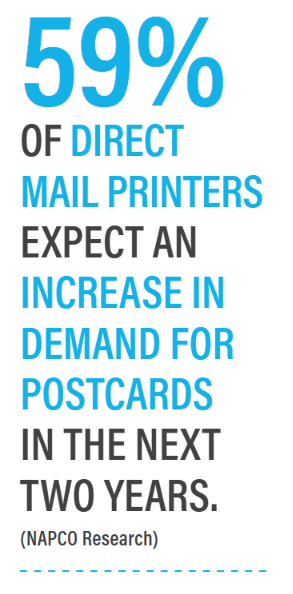The greatest threat to a direct mail piece is the trash can. To avoid that fate, it’s up to printers, designers, and distributors to make sure a recipient doesn’t reach into the mailbox and mumble that dreaded word: “junk.”
“Junk mail” is a nasty term for a highly useful piece of marketing. When done correctly, direct mail can be one of the most effective ways for businesses to quite literally reach their customers and prospects where they live. And, thanks to continued technological advancements related to direct mail marketing, the information that marketers can get from campaigns can allow them to track the effectiveness of their initiatives, rather than just sending out scores of postcards and hoping some of them translate to business.
So, whether you’re a print industry veteran or a distributor enticed by the idea of direct mail, read on to discover some ways that will ensure your campaigns aren’t trashed.
Start Small
Summer Gould has spent a lifetime around direct mail. She started as a teenager working for her father’s company, Eye/Comm Inc., stuffing envelopes and working in the mail room, eventually working her way up to the role of president in 2013. Her father sold the company in 2022, and Gould now serves as an account executive for Neyenesch Printers Inc., a print services provider based in San Diego.
For those new to direct mail, Gould says to start first with smaller print items rather than worrying about too many print features. It’s a bit like a pizza shop – if it can’t do a cheese pizza right, it probably isn’t going to nail something more specialized. The “cheese pizza” of direct mail, in Gould’s opinion, is a postcard.

“It’s basic,” she says. “You don’t have all the bells and whistles that can go into direct mail. The most important thing is the integrity of the data, so knowing how to use the data that’s provided by your client – making sure the name is at the right address and all that fun stuff – that’s really the key factor.”
Data, in this instance, refers to something as simple as the names of people and the addresses that are being sent direct mail pieces, and making sure that the people receiving the mail are the right audience – for example, the American Association of Retired Persons wouldn’t want to waste paper on 25-year-olds.
For the printing process itself, Gould says digital printing for postcards is a cost-efficient way to begin. From there, the printer or distributor can become more familiar with the method and start experimenting with fancier designs, but it still all comes down to mastering the art of ensuring data is accurate.
Gould has seen direct mail evolve from the early 1990s into the Internet era. In that time, it’s the data capabilities that have changed the most. This creates opportunities for the marketers.

PB Communications’ Paul Bobnak, who creates direct mail content for Who’s Mailing What! and other print-focused publications and providers, says that simple things like using data to create targeted copy can be enough to get a recipient’s attention.
“You can do something that stops them in their tracks and gets them to read it and go all the way through to the call to action in the ads,” he says. “We’re talking about using personalized copy that talks about their company or your target audience, or a single person maybe, using variable data printing that mentions them and maybe their job title – something that might be more localized.”
It’s not unlike other personalized promotional items. People want to feel like something was created just for them.
Clean Up Your Data
To get to the point where you can personalize your direct mail pieces and tailor them to the recipient, you still need to put in the work to ensure that you have good data.
Cyndi Greenglass, president of Chicago-based marketing firm Livingston Strategies, says that it’s often as simple as going through your mailing list data to ensure names are printed correctly and addresses appear as they should.

“It’s strange to say, but we all have email addresses and we all have phone numbers now, especially our mobile numbers, and we all have social media links, but physical addresses have become less captured and less maintained,” Greenglass says. “The first thing you have to do is make sure your customer has maintained a mail file and that you have a physical address.”
Next, be sure the names and addresses are correct during the printing process. Gould offers examples of what can go wrong if you don’t, such as maintaining data in Excel and accidentally cutting fields short or mis-sorting data so it jumbles information between records, or cutting digits off of zip codes and rendering them undeliverable.
With a good mailing list, Gould adds, you can cut costs further by being sure that you’re sending to people who will be much more likely to act on the call to action. For example, if your customer is a political candidate, you wouldn’t send mailers to people outside of their constituency who couldn’t vote for them.
“The ability to target the right people with the right message has made direct mail much more impactful and increased the ROI, so we’ll no longer send 10,000 pieces,” Gould says. “We’ll send 5,000 pieces, but we’ll send them to the right people so that we know we’ll get a better response rate.”
Get Creative
Once you’ve mastered the data and gotten a few jobs under your belt with simple postcards or similar products, what’s the next step? Jazz things up a bit.
Gould says that adding flash doesn’t need to be complicated. “I love foiling,” she says, referring to foil-stamping on paper. “It really catches the eye and stands out, and there are a bunch of studies that have shown that people spend a lot more time with a piece that’s got foil on it.”
Other coatings that offer tactile experiences could stand out too, such as a rubber texture that feels like the outside of a basketball or a velvety smooth finish for a luxurious piece.

To complement the printed solution, Greenglass recommends incorporating QR codes into the design, allowing the sender to direct recipients to landing pages. Maybe it’s a sign-up page or a video message to further tell the story.
You don’t need to rely on fancy print techniques. Instead, focus on getting your mail to the right people and create a simple, solid item like a flier or postcard. After all, Greenglass says, everyone has their phone within arm’s reach most of the time. Print doesn’t need to exist fully outside of the digital world.
Before you start planning fancy folds or expensive substrates, think instead how your direct mail piece could simply be a conduit for a more multidimensional branding experience.
“You pick up your phone and you’re going to scan the QR code with the piece of mail right in front of you,” Greenglass says. “It could be anything you would like that is an engagement device, and it takes that physical piece of mail and turns it into a multi-channel multimedia engagement device.”



